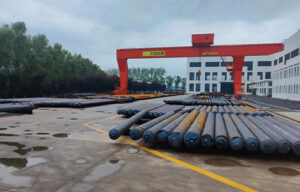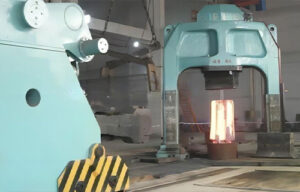Hot work tool steel is a class of materials known for their remarkable performance in high-temperature applications. Among the various properties that define the suitability of hot work tool steel for demanding industrial processes, hardness stands out as a critical factor. In this comprehensive article, we will delve into the significance of hardness in hot work tool steel, exploring its role in shaping material properties, extending tool life, and ensuring reliable performance in the most challenging conditions.

1. Introduction
Hardness is a fundamental property that significantly influences the suitability of hot work tool steel for various industrial applications. In high-temperature environments, maintaining hardness is crucial for ensuring the durability and performance of tools and components.
2. Hot Work Tool Steel: Composition and Characteristics
Alloying Elements
Hot work tool steel is meticulously engineered with a precise blend of alloying elements, including chromium, tungsten, molybdenum, and vanadium. These elements provide heat resistance, wear resistance, toughness, and hardness to the steel.
Heat Resistance and Wear Resistance
Hot work tool steel excels in heat resistance, allowing it to maintain its structural integrity even at temperatures exceeding 600°C (1112°F). Its wear resistance ensures that molds, dies, and tooling remain durable in abrasive environments.
The Role of Hardness
Hardness is a key property that complements the heat resistance and wear resistance of hot work tool steel. It influences the material’s ability to withstand mechanical stresses and maintain precision.
3. Understanding Hardness
Types of Hardness
There are several types of hardness, including Rockwell hardness, Brinell hardness, and Vickers hardness, each with its unique testing method and scale.
Measuring Hardness
Hardness is measured by applying a controlled force to the material’s surface and assessing the depth or size of the resulting indentation or deformation.
Hardness Scales
Different hardness scales are used to quantify the hardness of materials, depending on the testing method and the specific properties being evaluated.

4. The Role of Hardness in Hot Work Tool Steel
Wear Resistance
Hardness contributes significantly to wear resistance in hot work tool steel. A harder material can withstand abrasive forces and maintain its shape and precision, extending tool life.
Strength and Durability
Hardness enhances the material’s overall strength and durability, ensuring that it can endure mechanical stresses and impact loads without deforming or failing.
Machinability
While hardness improves wear resistance, it can also impact machinability. The balance between hardness and machinability is critical in tool and die manufacturing.
Precision in Manufacturing
In manufacturing processes like die casting, forging, extrusion, and plastic molding, maintaining hardness ensures that molds, dies, and tooling produce accurate and high-quality components.
5. Hardness Testing Methods
Rockwell Hardness Test
The Rockwell hardness test measures the depth of penetration of an indenter into the material’s surface under a specific load.
Brinell Hardness Test
The Brinell hardness test involves indenting the material with a spherical indenter and measuring the diameter of the resulting impression.
Vickers Hardness Test
The Vickers hardness test assesses hardness by measuring the size of an impression created by a diamond pyramid indenter.
6. Applications and Industries
Die Casting
In die casting, hot work tool steel molds with controlled hardness ensure dimensional accuracy and longevity, even when exposed to high-temperature molten metals.
Forging
Forging dies made from hot work tool steel with optimal hardness endure the mechanical stresses and impact loads associated with the forging process.
Extrusion
In extrusion, maintaining the hardness of tooling components is crucial for maintaining dimensional stability and extended tool life.
Plastic Molding
Precise molds made from hot work tool steel with the right hardness level ensure high-quality plastic components with tight tolerances.
7. Challenges and Considerations
Balancing Hardness with Other Properties
Achieving the right balance between hardness, heat resistance, toughness, and machinability is crucial in hot work tool steel alloy design.
Heat Treatment and Alloy Design
Proper heat treatment processes and alloy design are essential to ensure that the desired hardness level is achieved and maintained throughout the material’s service life.
8. FAQs
Frequently Asked Questions About the Significance of Hardness in Hot Work Tool Steel
Q1. Can hot work tool steel be too hard for certain applications?
Yes, hot work tool steel can become too hard for certain applications, making it brittle and prone to fracture. The selection of the appropriate hardness level must consider the specific requirements of the application.
Q2. Are there industry standards for hardness levels in hot work tool steel?
Industry standards and guidelines may exist for specific applications and sectors. It’s essential to consult relevant standards and work with experts in the field to determine the appropriate hardness level for a given application.
Q3. How does the heat treatment process affect the hardness of hot work tool steel?
The heat treatment process can significantly impact the hardness of hot work tool steel. Proper heat treatment protocols are crucial to achieving and maintaining the desired hardness level, as well as other essential properties.

